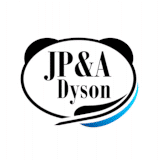Creating press proofs for self-published books
What is a press proof?
In order to be printed, your book will at some point have to be converted to PDF format – and not just any PDF, either. There are a whole range of different standards for PDF documents governed by various ISO standards which aim to optimise PDF documents for different purposes, such as archiving and image optimisation. A press proof needs to be a press quality PDF with embedded fonts and images at a resolution of 300dpi in order for a printer to be able to use it.
Do you need to create a press proof?
If you are using a self-publishing service such like CreateSpace you may find that you can supply a Word document, rather than a PDF. This doesn't mean that your book isn't printed from a PDF – it just means that the conversion process is handled behind the scenes by the self-publishing service.
The good thing about this is that it's free, and you know that you will definitely be getting a file that will be in the right format for your printer.
The downside is that you don't own your master PDF and cannot get access to the file. Some self publishing services will charge hundreds or perhaps even more than a thousand dollars to release your file, so if you ever want to change printers, or (as we advise doing) have a complimentary arrangement with a second printer, you could either end up facing a large bill, or having to create another press proof PDF from scratch, and repeat the whole proof checking process, while risking new errors and discrepancies being introduced.
In order to keep proper control over your own press files we therefore recommend that you make your own press proof PDFs. This may take a little trouble and perhaps a small expense, but we think it's worth it in order to secure your own files.
Create a press proof yourself
If you're lucky, you may already have the necessary software on your computer to create PDFs.
Check to see if you have Adobe Acrobat Professional installed on your machine. If you do, you should be able to create PDFs of the appropriate quality on your own computer. Be aware that Adobe Reader does not include this function, unfortunately.
Even if you don't have this piece of software, you may have other software capable of creating PDFs. Go to the program you used to create your manuscript and check the "Save As", "Export", and "Print" functions, to see if you have options to save as a PDF, export to PDF, or print to PDF (even though this last one is under the "print" function, it isn't actually to do with printing on paper – printing to PDF is basically just about outputting to a PDF file).
If you do have any of these options make sure that they give you the ability to control the quality of the PDF being created, and embed fonts. All PDFs are not equal, and printers will not be able to use PDFs which are not print quality, or which do not have embedded fonts.
There are various different types of PDF: PDF/A; PDF/E; PDF/VT; PDF/X. The latter standard – PDF/X – is optimised for print, and is the standard used in the publishing industry. This is the standard you should be using for your press proofs.
Unfortunately, lots of people don't have the capacity for creating PDFs on their own machines. So if you don't have any of these options, or you don't feel comfortable with all the different settings, you can consider one of the two following alternatives.
Buy your own program
If you feel confident with the various settings required to create a press ready proof, and plan on creating lots of proofs, then you might want to consider getting your own version of Adobe with which to do this. However, this isn't cheap, so you would need to be working with a lot of volume to justify it. To get the standard version on your desktop costs around $300 / £282, but to get the Pro version (which includes the option to convert and validate for the important PDF/X standard) you're looking at $450 / £453.
Professional conversion
If you only need to create one press proof, and/or are uncertain about the necessary settings, then you may want to get a professional to create your PDF for you. This will be a quick and simple job for someone who knows what they are doing, so they shouldn't charge you much, and it should be cheaper than buying your own program. It should also ensure that you get the correct format ready for printing.
Before you take this route, however, you need to be sure that you have no further changes to make to your file. If you need to go back and change it you will have to have it converted again, probably at the same price. If you do this a lot then you could end up significantly reducing the savings.





